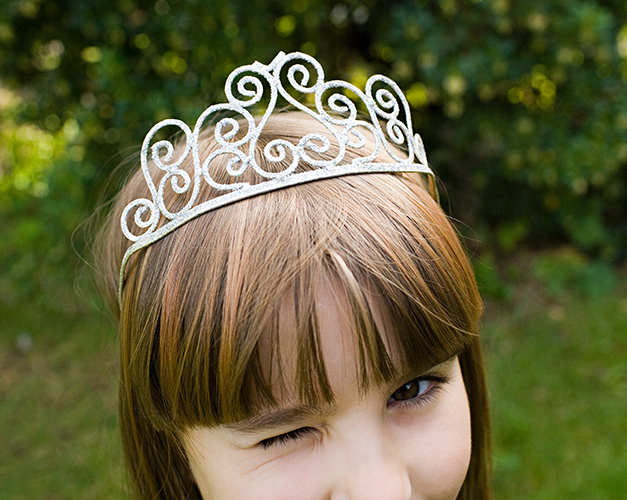A Princess Walks into a Museum …
When my daughter Hannah was only six years old, I took her to the Chicago Field Museum to see a traveling exhibition of vintage Cartier diamond jewelry. My husband thought I was a bit crazy to take her to see a sophisticated exhibit she couldn’t possibly appreciate.
I disagreed, knowing all about her fascination with fancy things, frilly dresses, fairy princesses, and playing dress up. Some might even call it an obsession. According to her preschool teacher, Hannah was the first four-year-old ever to draw a self-portrait with not only brightly colored fingernails but also rings on her fingers and a bracelet at her wrist!
As we lined up to enter the special exhibit, the crowd appeared to comprise well-dressed women (several dragging husbands or boyfriends along), Art Institute fashion students with nose rings, and perhaps a few fans of old Grace Kelly movies.
And then there was Hannah.
The minute she entered the elegant exhibit she was enchanted. For maximum effect, the jewels were displayed in dramatically lit, narrow glass pyramids perched atop short marble pedestals. Each side of each pyramid held a dazzling set of matching jewelry—tiara, earrings, and necklace—displayed in descending order against a background of deep, black velvet.
Hannah lingered over each display, taking in every detail, while mom (who wasn’t then and still is not much of a fashion maven), walked a bit ahead. All of a sudden, I started hearing grown-up women giggling behind me. When I turned around, I saw them all following behind Hannah. They were crouching down, pressing up close to the glass on the pyramids with mesmerized looks on their faces.
Apparently, Hannah figured out that if she placed her face just so near the side of the pyramid, in her reflection it looked exactly like she was wearing the glittering jewels inside the display case—tiara perched proudly on her head, earrings dangling from her ears, and a sparkling necklace at her throat. The effect was magical—and once the grown-up women caught on, absolutely contagious. There they all were, bent over nearly double, walking through this fancy exhibit at the height of a six-year-old with their necks outstretched and rapturous smiles on their faces.
Hannah clearly had a gift. She didn’t just see the same thing as everyone else in those glass cases. She saw a story, starring her as the heroine.
Unfortunately, watching the world with the eyes of a storyteller doesn’t come as naturally to most grownups as it does to children like Hannah. We may have unique perspectives and creative ideas. But after a while, we begin to suffer from a type of functional fixation—what psychologists describe as seeing just an object with a name instead of seeing what it can do or how it fits into a narrative. Thus, we only see a mop as a device for cleaning the floor, not as a delightful dancing partner for Fred Astaire. And we think of viewing a museum display as a passive endeavor instead of a chance to play dress-up.
That’s really too bad. Because finding the story adds meaning to almost everything. Marketing without a compelling story, for example, is simply selling in a way that turns your audience into a commodity just like your product. Add interest, empathy, and emotion, however, and you’ve created connection via a shared—and probably a lot more memorable—experience.
So, make sure you’re including story in your communications with stakeholders—detailing the benefits of your products or describing the value of your company in a way that piques their interest, draws them into the narrative, and makes them want to find out what’s going to happen next.
Without Hannah, most of the women at the museum that day would have gone home thinking they’d really “seen” the Cartier collection. But by looking at the diamonds through Hannah’s eyes—the eyes of a storyteller—they saw so much more than beautiful jewelry. They experienced, just for a minute or two, what it must feel like to be a princess.
Diane Landsman is Street Level Studio’s Content Strategist
